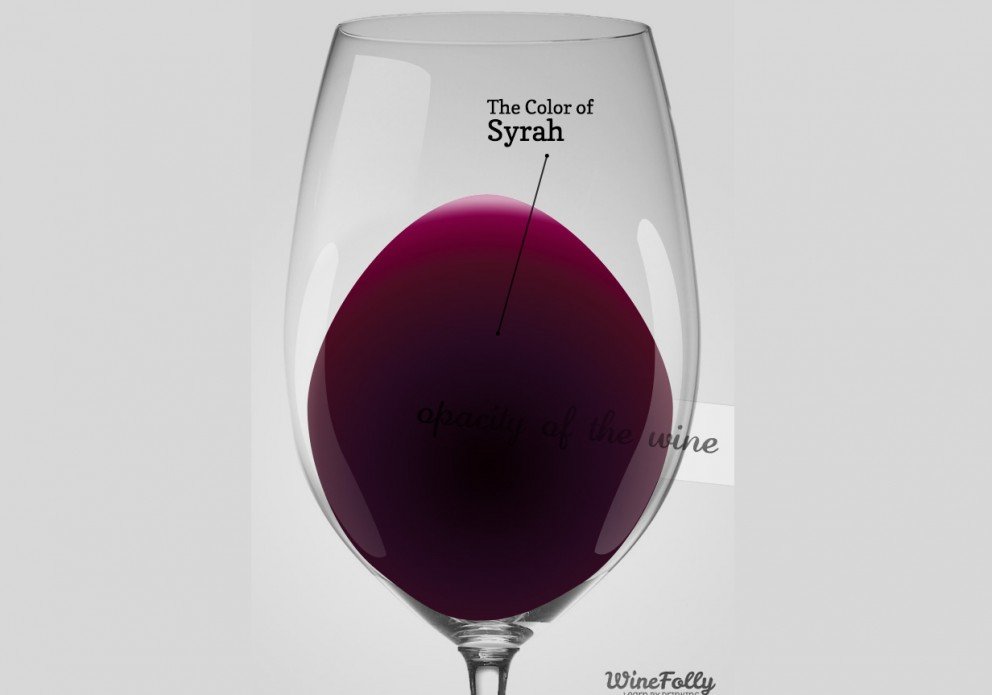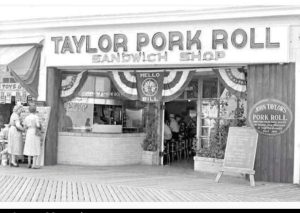Grape Chaser of note, Bill McManus, posts some informative articles about wines in general. Enjoy!
Origin
Syrah has a long documented history in the Rhone region of Southeastern France, but its not known if it originated there.
According to Wikipedia, The DNA typing leaves no room for doubt in this matter, and the numerous other hypotheses of the grape's origin which have been forwarded during the years all completely lack support in form of documentary evidence, be it by methods of classical botany or DNA. Instead, they seem to have been based primarily or solely on the name or synonyms of the variety. Because of varying orthography for grape names, especially for old varieties, this is in general very thin evidence. Despite this, origins such as Syracuse or the Iranian city of Shiraz have been proposed.
The parentage information does not reveal how old the grape variety is.
The wines that made Syrah famous were those from Hermitage. For centuries, Hermitage wines have had a reputation for being powerful and excellent. While Hermitage was quite famous in the 18th and 19th centuries, and attracted interest from foreign oenophiles such as Bordeaux enthusiast Thomas Jefferson, it lost ground and foreign attention in the first half of the 20th century.
In the 18th and the first half of the 19th centuries, most Hermitage wine that left France did so as a blending component in Bordeaux wines. In an era when “clarets” were less powerful than today, and before appellation rules, red wines from warmer regions would be used for improvement (adulteration, depending on the point of view) of Bordeaux wines. While Spanish and Algerian wines are also known to have been used for this purpose, top Bordeaux châteaux would use Hermitage to improve their wines, especially in weaker vintages.
Syrah continues to be the main grape of the Northern Rhône. In the Southern Rhône it is used as a blending grape. Although its best incarnations will age for decades, less-extracted styles may be enjoyed young for their lively red and blueberry characters and smooth tannin structure. Syrah has been widely used as a blending grape in the red wines of many countries due to its fleshy fruit mid-palate, balancing the weaknesses of other varieties and resulting in a “complete” wine.
From the 1970s and even more from the 1990s, Syrah has enjoyed increased popularity and plantings of the variety have expanded significantly in both old and new locations. In the early 2000s, it broke into the top 10 of varieties planted worldwide for the first time.
Syrah wines
Syrah is widely used to make a dry red table wine which can be both varietal or blended. Four main uses can be distinguished:
- Varietal Syrah or Shiraz. Of the better-known wines, this is the style of Hermitage in northern Rhône or Australian Shiraz.
- Syrah blended with a small amount of Vioigner. This is the traditional style of Côte-Rôtie in northern Rhône.
- Syrah as a roughly equal blending component for Cabernet Sauvignon. In modern times, this blend originated in Australia, so it is often known as Shiraz-Cabernet.
Smaller amounts of Syrah are also used in the production of other wine styles, such as fortified wine in Port wine style, and sparkling red wine. While Australian sparkling Shiraz traditionally have had some sweetness, a number of Australian winemakers also make a full-bodied sparkling dry Shiraz that contains the complexity and sometimes earthy notes that are normally found in still wine.
Due to their concentrated flavors and high tannin content, many premium Syrah wines are at their best after some considerable bottle aging. In exceptional cases, this may be 15 years or longer.
Syrah has one of the highest recommended wine serving temperatures at 65 °F (18 °C)
The name Shiraz
It is called Syrah in France, its country of origin, as well as in the rest of Europe, Argentina, Chile, New Zealand, Uruguay and most of the United States. The name Shiraz became popular for this grape variety in Australia where it has long been established as the most grown dark-skinned variety. In Australia it was also commonly called Hermitage up to the late 1980s. The name Shiraz for this grape variety is also commonly used in South Africa and Canada.
Legends of Syrah's origins come from one of its synonyms, Shiraz, because a city in Iran called Shiraz produced the well-known Shirazi Wine. Legends claim that the Syrah grape originated in Shiraz and then was brought to Rhône. This association suggests that “Syrah” is a local French synonym and “Shiraz” is the proper name.
Arrival in Australia
In 1831, the Scotsman James Busby, often called “the Father of Australian viticulture,” made a trip back to Europe to collect cuttings from vines (primarily from France and Spain) for introduction to Australia. One of the varieties collected by him was Syrah, although Busby used the two spellings “Scyras” and “Ciras”. The cuttings were planted in the Sydney Botanical Gardens, and in Hunter Valley, and in 1839 were brought from Sydney to South Australia. By the 1860s, Syrah was established as an important variety in Australia.
The Syrah grape introduced into Australia in 1832 is almost invariably called Shiraz. Today it is Australia's most popular red grape, but has not always been in such favor. In the 1970s, white wine was so popular that growers were ripping out unprofitable Shiraz and Grenache vineyards, even those with very old vines. Many factors, including the success of brands like Lindemans (part of Fosters Group) and Jacobs Creek in the UK, as well as Rosemont in the US and UK, were responsible for a dramatic expansion of plantings during the 1980s and 1990s. A similar trajectory occurred in California. However, the biggest factor in this expansion during the 1990s was a federal government tax subsidy to those planting new vineyards.
In the 2005-2006 growing season, total Shiraz plantations in Australia stood at 41,115 hectares (101,600 acres), of which 39,087 hectares (96,590 acres) were old enough to be productive. These vines yielded a total of 422,430 tons of Shiraz grapes for wine production. Shiraz is thus the most planted variety in Australia, with the world's second largest plantations of Syrah/Shiraz, after France.
Victorian regions include Heathcote, roughly 1.5 hours north of Melbourne. Cooler climate regions such as Western Australia's Margaret River produce Shiraz with marginally less alcohol content and often in a more traditional French style.
A well-known example of the Shiraz grape in Australian viticulture is the Penfolds Grange. This wine was created by winemaker Max Schubert in 1951, and has a reputation of aging well. The Penfolds Grange is predominantly Shiraz, but often includes a small quantity of Cabernet Sauvignon. It is usually a multi-regional blend of quality South Australian Shiraz, with the Barossa Valley playing an important role, and matured in new American Oak. Other well-known Australian Shiraz wines include Henschke “Hill of Grace” and the Penfolds “RWT”.
Recently, Australian Shiraz producers have started to add up to 4% Viognier to their Shiraz to bring apricot tones to the wine's nose and palate. With such a small percentage added, the producer wasn't obliged to declare the blend on the label. In the past 5 years however, it's becoming increasingly fashionable to label the wine Shiraz Viognier as Viognier gains consumer acceptance in the market place. The practice of blending Viognier with Syrah has actually been common for years in the Northern Rhône Valley region of Cote-Rotie.
Shiraz is also the “S” in “GSM” (Grenache-Shiraz-Mourvèdre), which is common Australian designation for a Châteneuf-du-Pape-like blend.
Taste and Flavors
Wines made from Syrah are often powerfully flavored and full-bodied. The variety produces wines with a wide range of flavor notes, depending on the climate and soils where it is grown, as well as other viticultural practices chosen. Aroma characters can range from violets to berries (usually dark as opposed to red), chocolate, espresso and black pepper. No one aroma can be called “typical” though blackberry and pepper are often noticed. With time in the bottle these “primary” notes are moderated and then supplemented with earthy or savory “tertiary” notes such as leather and truffle. “Secondary” flavor and aroma notes are those associated with several things, including winemakers' practices such as oak barrel and yeast regimes.
So, you say Syrah, I say Shiraz. All together now, Que Syrah, Shiraz!
Cheers!































Hi Bill,
What a wonderful fund of information – who knew! It’s great you are doing this column. The knowledge is so useful in so many ways. Keep up the great work!